Why Spain is a great place for kids
Choosing the city that's right for you
Choosing the visa that's right for you
More than just great weather
Why Spain provides a better quality of life

How we Plan
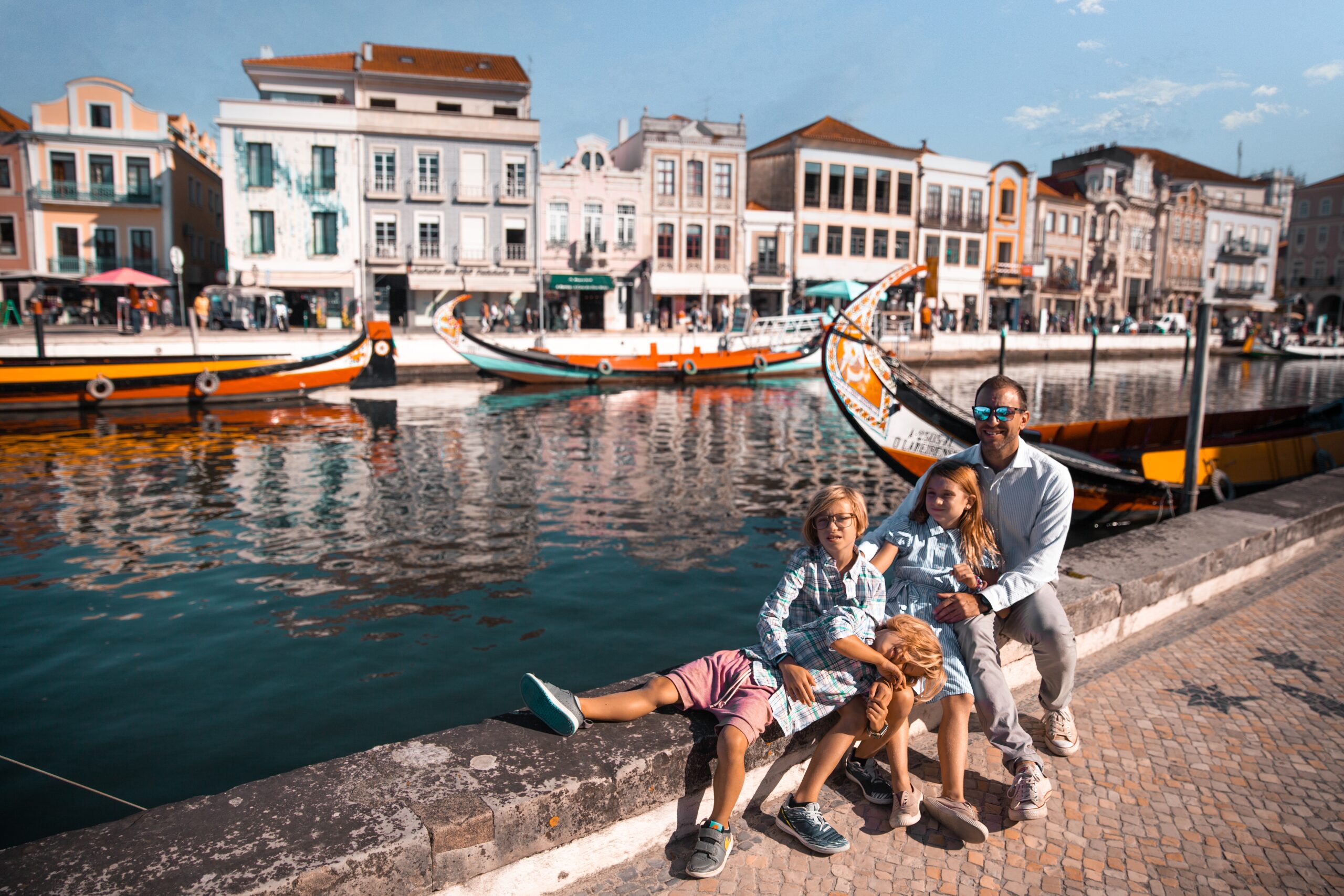
What we pack
Choosing Travel Insurance
Book Your Hotel
with Booking.com
Book Your Car
with RentalCars.com
Book Your Flight
with Skyscanner.com
Book Your Tour
with GetYourGuide.com

Our Camera Gear

How We Fly
Choosing Your Destination
The Amalfi Coast (and the surrounding area) is an unforgettable blend of natural beauty and historical richness. We went from stunning coastlines to rugged mountains to uncovering stories hidden within ancient streets – sometimes in the course of one day. Oh, and, the cuisine here was a journey in and of itself, offering flavors as rich and varied as the region’s history. Ok, well, the kids just ate pizza and pasta bolognese, but you get the idea.
With the warm Mediterranean sun overhead, our days were filled with visits to picturesque coastal towns and hidden villages, each offering a glimpse into a lifestyle that’s both inviting and intriguing. This part of Southern Italy is more than just a destination; it’s an exploration of culture, history, family adventures, and explaining to your kids how people die from volcanoes.
Here, we’ll take a look at the Amalfi Coast and beyond – Capri, Positano, Ravello, Sorrento, and Pompeii. The whole area constituting a mosaic of breathtaking landscapes and rich history. As you’ll see, each destination offers a unique blend of natural beauty and cultural depth, from the Amalfi’s dramatic cliffs to Capri’s chic allure and Positano’s quaint charm. Ravello’s gardens and Sorrento’s vibrant streets filled with the scent of lemons further enrich this tapestry, creating a journey that’s not just about travel but a deep dive into a life-affirming culture.
So, pack your bags and prepare to be enchanted by some of the most beautiful places in Southern Italy – the Amalfi Coast and beyond. This is more than a trip; it’s a voyage through time, a dance with history, and a love affair with landscapes that will leave an indelible mark on your soul. And your kids will leave with a newfound fear of volcanoes.
1. Amalfi Coast: A Symphony of Sea, Cliffs, and Colors
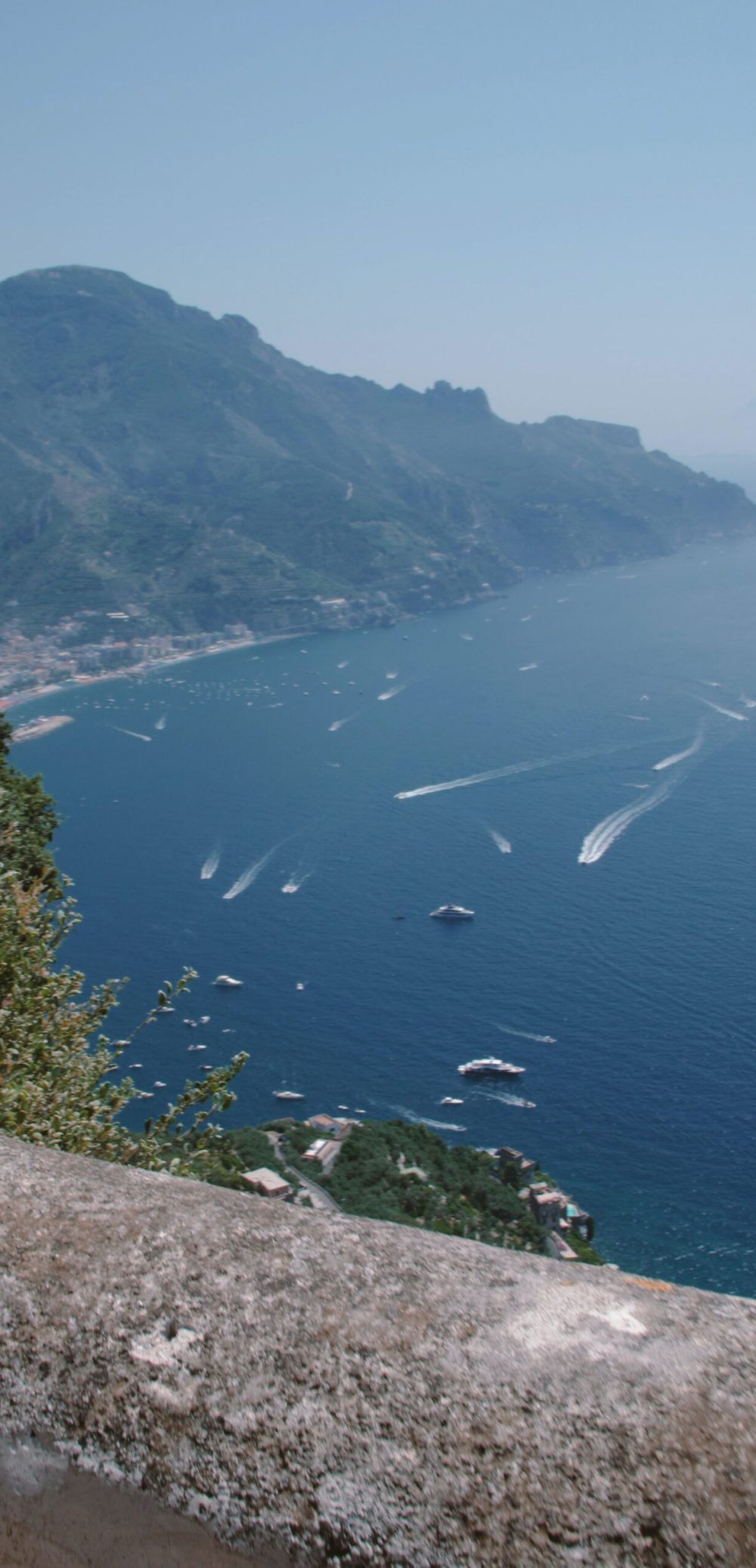
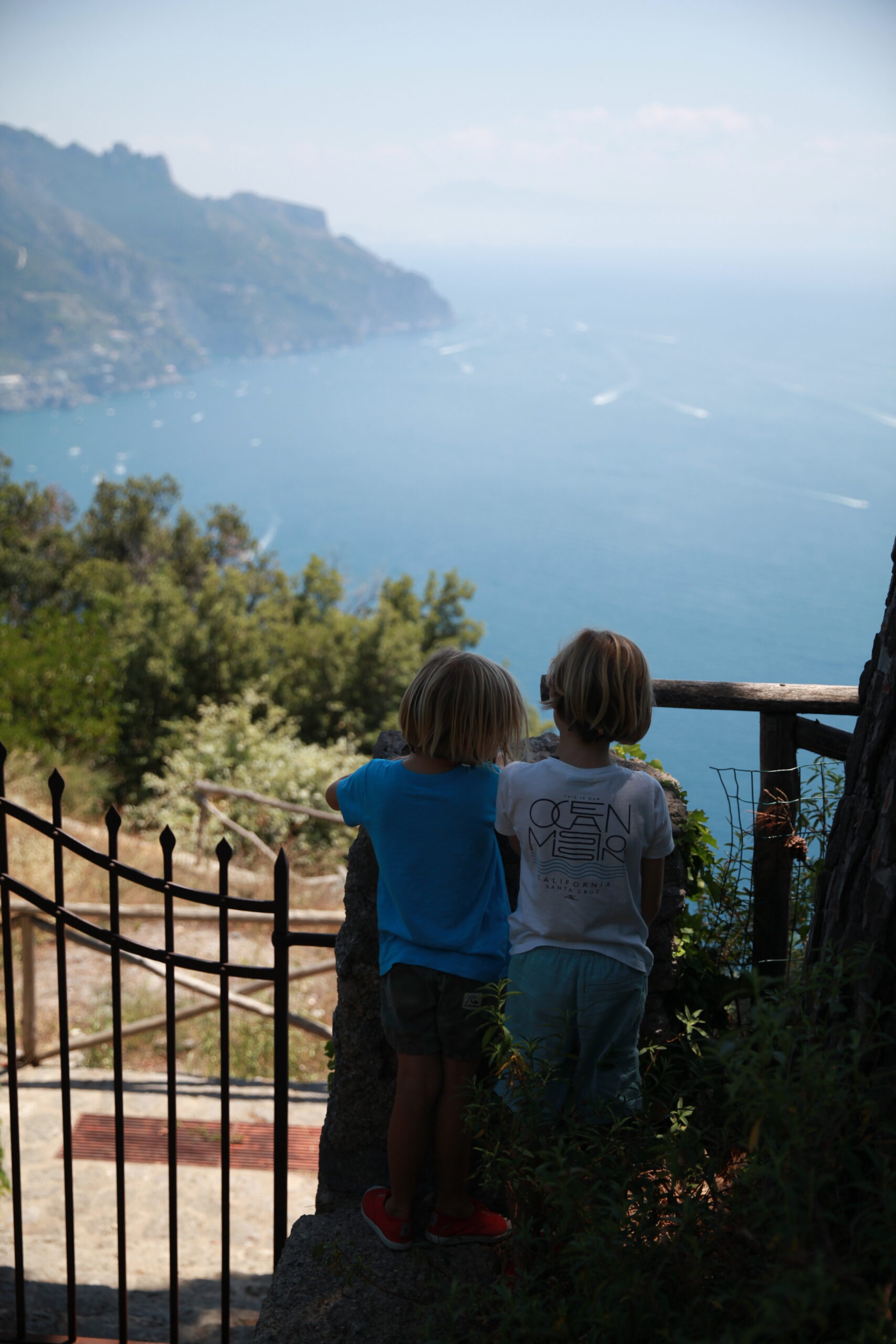
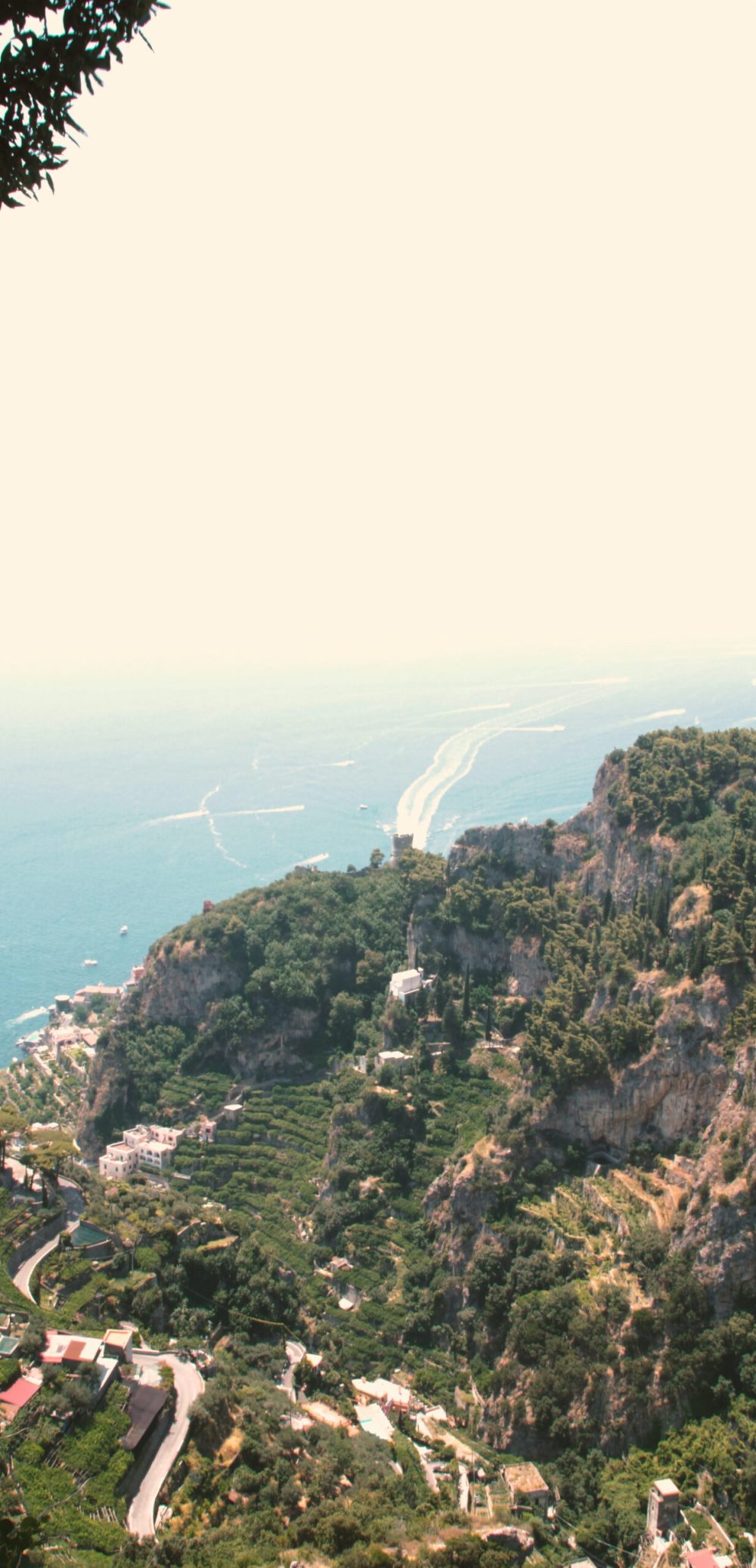
A Brief History
The Amalfi Coast, renowned for its extraordinary beauty, has a history as dramatic as its landscape. Its historical significance and stunning natural beauty even led to its designation as a UNESCO World Heritage site.
Originating as a Roman settlement, it quickly became an important maritime power. Around the 9th century, Amalfi itself emerged as a powerful maritime republic, rivaling other great maritime cities like Venice, Genoa, and Pisa. Its strategic position on the Mediterranean routes made it a pivotal trading hub between the Byzantine and western worlds.
Amalfi’s wealth and power in the Middle Ages can be attributed to its navy and its innovations in maritime laws. The “Tavole Amalfitane” were among the earliest codes of maritime laws and were used throughout the Mediterranean for centuries.
However, the prosperity of Amalfi was not to last. The city faced numerous challenges, including natural disasters like earthquakes and tsunamis, and was eventually sacked and conquered by the Normans in the 11th century. This marked the beginning of its decline as a maritime power.
Despite its fall from political and economic grace, the Amalfi Coast continued to thrive culturally and remained an important center of trade and navigation. Over the centuries, it became more isolated due to its geographical position, which helped preserve its unique landscape and cultural heritage.
Today, the Amalfi Coast is celebrated for its breathtaking scenery, historical towns, and vibrant cultural heritage. Everyone has heard of it, and everyone wants to go. After its listing as a UNESCO World Heritage Site in 1997, its popularity only skyrocketed. Thankfully, despite the influx of tourists, the Coast’s history is still visible in its architecture, ranging from ancient churches and villas to the intricate network of footpaths and roads that connect its mountains to the sea.
Best Time to Visit the Amalfi Coast
The best time to visit the Amalfi Coast is typically between April and June or September and October. The weather is usually warm and sunny during these months, ideal for enjoying the coast’s stunning scenery and outdoor activities. Additionally, these periods are less crowded than the peak summer months, offering a more relaxed experience while still capturing the vibrant essence of the region. This might not fit your kids’ school schedule, but “bumper season” is always the best.
Cool Cities on the Amalfi Coast
Five great cities (not named Positano or Ravello) to stop at along the Amalfi Coast are:
1. Priano
Praiano offers more than just breathtaking views and serene blue waters. Unlike its more crowded neighbors, Praiano provides a cool blend of thrilling drives along winding coastal roads and tranquil moments of seaside bliss.
Yes, you’ll have to navigate hairpin turns with the Mediterranean’s azure, expansive grave stretched out below. But this test of skill will reward you with unparalleled scenic vistas. Each curve reveals a new panorama, with sun-drenched terraces and verdant cliffs plunging into the sea (and, hopefully, that’s the only thing plunging into the sea).
This quaint village serves as the perfect base for those seeking both adrenaline and peace. In Praiano, the adventure doesn’t end with the drive; it’s where the real exploration begins, offering secluded coves and enchanting pathways leading to the heart of the Amalfi’s untouched beauty.
2. Maiori and Minori
Maiori and Minori await to enchant the adventurous soul. With Maiori boasting the longest beach on the coast and Minori offering ancient Roman ruins, these towns are a perfect mix of history, culture, and natural beauty.
Not to sound like a broken record, but the drive to these towns is nothing short of thrilling – with winding roads that trace the coastline, offering dramatic views of the sea below and the cliffs above. Please drive carefully!
Whether you’re seeking the tranquility of a seaside escape or the thrill of exploring lush lemon groves and historic sites, Maiori and Minori deliver an unforgettable adventure. These towns exemplify the beauty of the Amalfi Coast.
3. Furore
Furore, known for its “fjord,” offers a stunning gorge that leads to a secluded beach. Furore may offer the tranquility and thrill you seek.
The drive to Furore is much, much easier than the ones mentioned above. I’m kidding, of course.
4. Atrani
Atrani is possibly the best-kept secret here. The smallest town in Italy is a picturesque escape with its narrow streets, ancient churches, and stunning beach nestled between towering cliffs.
I almost feel silly for telling you, again, how crazy the drive will be.
5. Salerno
Salerno is like an overlooked little sibling, which makes it a perfect place to visit. The city itself is a treasure trove of historical sites, bustling piazzas, and lush gardens, providing a perfect mix of exploration and relaxation.
Tour Packages
For an enchanting experience on the Amalfi Coast, consider the From Sorrento: Positano and Amalfi Boat Trip with Transfer. This tour offers a unique opportunity to explore the stunning coastline from the sea, including visits to picturesque Positano and historic Amalfi. It combines scenic boat rides with the convenience of transfers, allowing you to immerse yourself in the beauty and charm of these iconic destinations.
Another option is the Rome: Amalfi Coast and Positano Day Trip with Coastal Cruise offered by GetYourGuide. This trip allows you the leisure of traveling to a notoriously difficult-to-get-to place from a simple flight to Rome.
Book Your Flight
Where to Stay on the Amalfi Coast
- Hotel Marina Riviera: Revel in luxury with breathtaking sea views, where every room offers a glimpse of the Mediterranean’s charm.
- Santa Caterina Hotel: This hotel embodies elegance, surrounded by the enchanting beauty of the Mediterranean landscape.
- Villa Lara: A cozy and picturesque retreat, perfect for those seeking a more intimate Amalfi experience.
- NH Collection Grand Hotel Convento di Amalfi: Steeped in history, this hotel offers a unique blend of historical elegance and modern luxury.
Why Visit the Amalfi Coast
Visiting the Amalfi Coast means stepping into one of the most beautiful places in Southern Italy. It really is as beautiful as you’d imagine. Difficult driving, sure. But you can always just hire a driver. And, sometimes the most difficult places to get to can be the best to experience. Just go get it. What are you waiting for?
2. Positano: The Absolute Jewel of the Amalfi Coast
Positano is what you think of when you think of this area. It truly captivates with its cascading, colorful houses and breathtaking sea views. This charming town, once a prosperous maritime village, has transformed into a world-renowned haven of beauty and luxury.
Its vertical layout, clinging to the cliffs, and vibrant architecture offer a unique visual spectacle. Just look at the buildings clinging to the spectacular, giant rock rising from the sea.


A Brief History
Positano boasts a rich history that spans centuries. The town’s origins are shrouded in myth and legend, with some accounts suggesting it was founded by Poseidon, the god of the sea, for the love of the nymph Pasitea. Its history, as mentioned above, is deeply rooted in the medieval era, becoming significant in the 9th century as part of the powerful maritime Republic of Amalfi.
However, like many coastal towns, it suffered from pirate raids, which led to the construction of watchtowers along the coast to protect the inhabitants. The decline of the Amalfi Republic in the 11th century and subsequent pirate threats saw Positano’s fortunes wane. By the 19th century, it had become a relatively poor fishing village. Its beauty, though, began to attract artists, writers, and celebrities in the late 19th and early 20th centuries, marking the beginning of its transformation into a renowned tourist destination.
In the 1950s, Positano caught the attention of the international jet set, becoming a symbol of la dolce vita on the Amalfi Coast. Its charming, colorful houses stacked on the cliffs, beautiful pebble beaches, and stunning sea views have made it a favorite for travelers seeking beauty and tranquility.
Today, Positano is celebrated not only for its scenic beauty but also for its historical sites, including the Church of Santa Maria Assunta with its magnificent dome tiled in majolica, and its ancient streets and pathways that offer glimpses into its rich past. Despite its evolution into a bustling tourist hotspot, Positano retains the charm and history that have captivated people for centuries.
Best Time to Visit Positano
The best time, of course, to visit Positano is during the shoulder seasons, which are from April to June and September to October. These months offer warm, pleasant weather and fewer crowds, making it ideal for exploring the town’s beauty and enjoying outdoor activities.
Top Beaches in Positano
Here are the top 5 beaches in Positano you can consider visiting:
1. Spiaggia Grande
Marina Grande Beach, or Spiaggia Grande to those in the know, is Positano’s beachfront star. Right in the town’s center, it’s where the Amalfi Coast’s action unfolds, with boats buzzing and the sea shimmering. A walk down from the Church of Santa Maria Assunta leads you straight to its sandy embrace.
For the budget-conscious, a tiny patch of beach offers a free spot for your towel, but be warned: comfort here comes with a cost. At Lido L’Incanto, expect to shell out €60 to €80 for two sunbeds. Dining ranges from the upscale RADA Beach Bistrot to the ever-popular Chez Black, offering varied culinary experiences.
2. La Scogliera Beach Club
La Scogliera Beach Club in Positano is where the glamour of the Amalfi Coast maxes out its credit card. Tucked away on Spiaggia Grande, this isn’t just a beach club; it’s the VIP lounge of the Mediterranean.
With prices that’ll make your wallet weep, starting at €200 for two sunbeds, it’s where you pretend you’re in a Bond movie, minus the action because you’re too relaxed. The prices when you get there? A mystery, like the rest of Positano’s billing practices.
3. Fornillo Beach
Fornillo Beach in Positano, a secret paradise for those who dread the crowded main beach scene, is your go-to for some peace, minus the sand castles. Tucked away to the left of Positano’s map, this little beauty is just a ten-minute scenic march from the chaos of Spiaggia Grande.
Brace yourself for a workout though, because getting there involves navigating Positano’s infamous stair maze. But, hey, at least it’s free to lay on the rocks (ouch), or you can splurge €30-€40 to avoid the pebble imprint on your back with a sunbed. Bring water shoes unless you enjoy the hot coal walk challenge.
4. Arienzo Beach
Arienzo Beach, Positano’s less-talked-about paradise, offers an escape with a smaller price tag. Located just outside the main hustle, your trek involves a free boat shuttle (who doesn’t love a free ride?) or braving 300 steps—your choice of cardio for the day.
With 2024 prices ranging from €175 to a jaw-dropping €630+ per person, you’re paying for more than just sand and water; you’re buying a slice of exclusivity with those iconic orange umbrellas.
5. Gavitella Beach
Gavitella Beach in Praiano is your off-the-beaten-path slice of the Amalfi Coast, where you trade the Positano crowds for a 400-step leg day workout. Tucked away next to Positano, it’s accessible via a free boat shuttle that saves you from the Stairmaster experience, unless you’re up for it.
With One Fire Beach Club as its party heart, prices start at a cool €65 for front-row lounging or €40 for the cheap seats. Open from 10am to 7pm, make sure to rock up before 1pm, or your sunbed dreams might just wash away with the tide.


Tour Packages
The From Sorrento: Amalfi Coast Tour – Positano, Amalfi & Ravello offered by GetYourGuide is a cozy small-group tour limited to 8 people, ensuring a personalized and intimate experience. This day trip from Sorrento allows participants to explore the vibrant village of Positano, indulge in seaside dining in Amalfi, and wander through the blooming gardens of Ravello.
The tour promises a blend of leisure and exploration, with highlights including chic boutiques selling handmade ceramics and leather sandals, the unique beauty of Ravello’s Villa Cimbrone and Villa Rufolo, and the stress-free immersion in the picturesque settings of Positano, Amalfi, and Ravello.
The Positano, Amalfi, and Ravello Small Group Tour from Sorrento is a meticulously curated day trip, offering an intimate glimpse into the heart of the Amalfi Coast, a UNESCO World Heritage site. This tour stands out by limiting its group size, ensuring a more personalized and comfortable experience as you explore the sun-drenched landscapes and cultural richness of Positano, Amalfi, and Ravello.
Participants are treated to the luxury of traveling in a Mercedes van, with the added benefit of an English-speaking driver who shares insights into each location’s unique charm. The package includes stops at each town, providing ample time for exploration, shopping, and soaking in the breathtaking views.
Where to Stay in Positano
In Positano, every listed accommodation provides a unique and opulent experience, complete with stunning vistas.
- Le Sirenuse offers an exquisite dining experience with its oyster bar, where guests can savor a selection of oysters paired with champagne. The hotel’s Michelin-starred restaurant boasts a spacious terrace that provides breathtaking views of the sea, enhancing the dining experience with its scenic backdrop.
- Hotel Poseidon offers stunning sea views from its terrace, with easy access to the beach and Positano’s historical center. It features an outdoor pool and a unique wellness area with a Turkish bath carved into the rocks. Guests can enjoy a rich buffet breakfast and traditional Neapolitan cuisine at the hotel’s rustic yet elegant restaurant, with the option to dine on the terrace during summer. Rooms showcase Mediterranean décor, free Wi-Fi, and complimentary porter service, ensuring a comfortable and memorable stay.
- Villa Treville, nestled in Positano, offers a serene and exclusive retreat. Its secluded estate is adorned with private gardens and terraces, ensuring an intimate and luxurious experience. The villa’s unique charm and elegance make it a perfect hideaway for those seeking privacy and tranquility in the heart of the Amalfi Coast’s breathtaking landscapes. A stay in Villa Treville for one night for two adults usually cost around € 1,150.
- Il San Pietro di Positano is celebrated for its exclusive cliffside location and Michelin-starred dining, offering guests luxury experiences with spectacular sea views. The hotel specializes in gourmet cuisine that emphasizes fresh, local ingredients, providing a true taste of Italian culinary excellence. Guests enjoy access to a private beach, ensuring a secluded and premium seaside experience.
Where to Eat and Dine at Positano
Exploring Positano’s culinary scene is a top-tier activity, thanks to its stunning array of dining spots and the incredible variety of mouthwatering dishes on offer!
1. Il Tridente Restaurant
Nestled atop Hotel Poseidon, Il Tridente Restaurant and Cocktail Bar is a culinary gem that offers a dining experience unlike any other in Positano. Specializing in Italian cuisine with a focus on pasta, seafood, and meat dishes crafted from locally sourced ingredients, the menu is a fresh, ever-changing ode to the Amalfi Coast’s bounty.
What sets Il Tridente apart is its panoramic terrace, presenting an enchanting view that becomes magical as the sun sets, transitioning into a romantic ambiance under the glow of moonlight and candlelight. Ideal for an unforgettable evening, dining here at sunset elevates the experience, making it not just a meal, but a moment to treasure.
Whether you’re in for dinner or just stopping by for a cocktail, Il Tridente promises an unparalleled atmosphere perfect for starting an unforgettable Positano night. Reservations are a must, ensuring your spot in this sought-after locale.
2. Saraceno d’Oro
Dive into the heart of Positano’s less-trodden path in Fornillo, and you’ll stumble upon a culinary treasure: Saraceno d’Oro. This isn’t just any restaurant; it’s a slice of local life, where the pizza isn’t just food, it’s a masterpiece straight from a wood oven that could make angels sing.
Open since the swinging ’60s and run by a family so sweet they could put sugar out of business, Saraceno d’Oro dishes out the kind of authentic Italian and Mediterranean cuisine that’ll make you want to kiss the chef.
If you find yourself under the spell of their outdoor seating, prepare for an enchanting evening of mood lighting, people-watching, and the serendipitous strains of live music wafting through the air. And hey, if Elia serves you, drop Christie’s name; you’ll be in for a treat. Forget scrolling through photos online; they don’t do this gem justice. Just go, experience it for yourself, and let Saraceno d’Oro top your list of unforgettable Positano eats.
3. La Tagliata
La Tagliata, nestled in Montepertuso’s hills above Positano, offers a dining experience that’s as fresh as it gets, with its own organic garden and farm dictating the daily menu. Here, the surprise is part of the charm, as diners are treated to a series of four to five courses, each paired perfectly with wine.
The location provides breathtaking views, distinct from the usual Positano offerings due to its elevated position. Plus, they’ve got your back with a complimentary shuttle service from your hotel to their picturesque spot. It’s a culinary journey not just about eating, but about experiencing the heart and soul of Positano’s landscape and agricultural bounty.
Why Visit Positano
Visiting Positano offers an enchanting experience with its stunning cliffside architecture, vibrant streets lined with boutique shops, and exquisite local cuisine. The town is a gateway to the Amalfi Coast’s beauty, boasting breathtaking sea views and a warm, welcoming atmosphere. Positano’s beaches, such as Spiaggia Grande, offer clear waters and relaxation under the Italian sun. It’s a destination that combines natural beauty, historical depth, and cultural richness, making it an unforgettable part of any trip to Italy.
3. Ravello: Our Pick as the Star of the Amalfi Coast
Perched high up on the Amalfi Coast, Ravello offers breathtaking views that have inspired artists and writers for centuries. This serene town is a blend of cultural richness and natural beauty.
Ravello captivates with its historical depth and architectural wonders. Known for its medieval villas and gardens, such as the celebrated Villa Rufolo, Ravello offers insights into the opulent lifestyles of Italy’s medieval aristocracy.
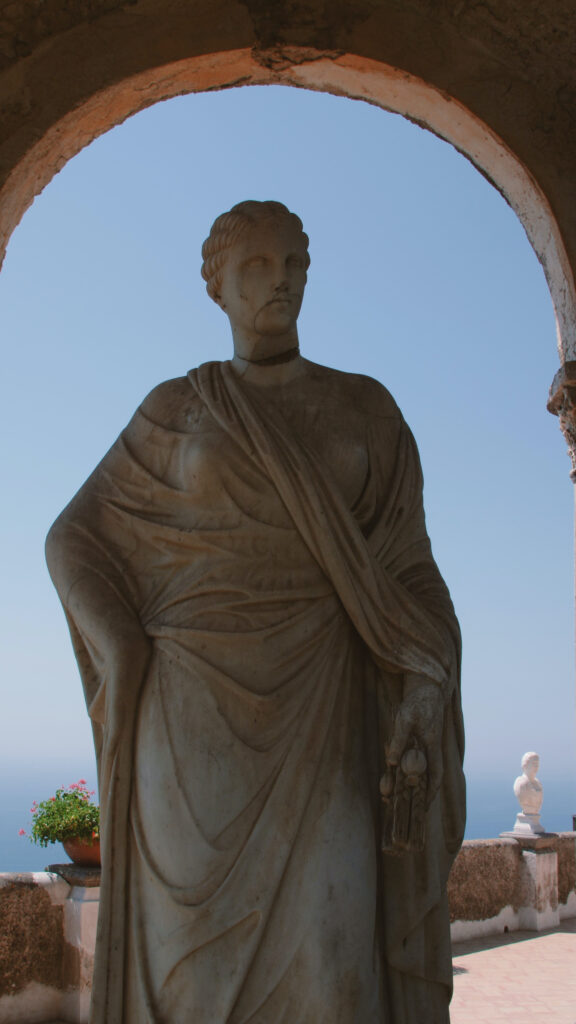
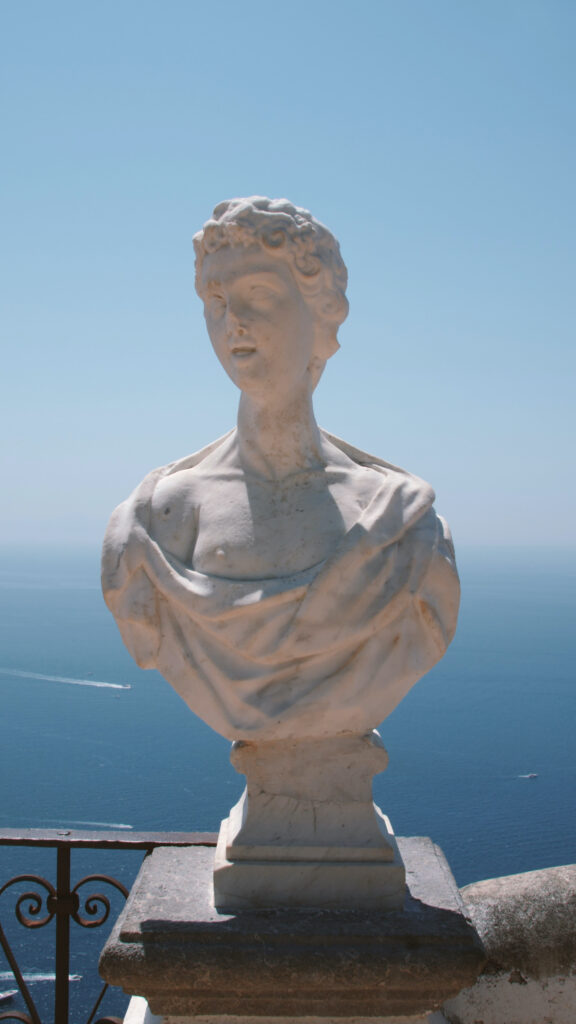
Brief History
As alluded to above, Ravello has a saga that kicks off around the 5th or 6th century, diving into medieval glam by the 9th century as part of the swanky Maritime Republic of Amalfi. This place wasn’t just about olives and vino; it was a trading hotspot, flaunting its wealth and attracting the medieval who’s who.
Fast forward to the Middle Ages, and Ravello turns into the ultimate artists’ retreat. Imagine this: creatives from all corners of Europe descending on the town, eager to soak in its inspirational vibes. The town’s pièce de résistance? The Villas Rufolo and Cimbrone, with gardens so stunning they could make a grown knight cry.
Villa Cimbrone and Villa Rufolo are two of Ravello’s most iconic landmarks, each boasting a rich history and breathtaking views that have charmed visitors for centuries. Nestled on the cliffs of the Amalfi Coast, these villas encapsulate the essence of Italian elegance and the sublime beauty of the Mediterranean landscape.
Villa Cimbrone
Villa Cimbrone dates back to the 11th century but gained its current splendor in the early 20th century when it was renovated by British nobleman Lord Grimthorpe. The villa is renowned for its stunning gardens, the “Terrace of Infinity” being the crown jewel.
This terrace, lined with classical statues, offers panoramic views over the coast that are so mesmerizing they seem to stretch into infinity. The gardens are a blend of English and Italian landscaping styles, featuring a variety of exotic plants, ornate statues, and picturesque walkways that invite leisurely strolls and contemplation.
Villa Rufolo
Villa Rufolo, with origins in the 13th century, boasts a history that intertwines with the noble Rufolo family, merchants who played a significant role in Ravello’s prosperity during the Middle Ages. The villa’s architecture is a testament to the Moorish influence on the Amalfi Coast, showcasing intricate gardens, arched courtyards, and vibrant tilework.
The highlight of Villa Rufolo is its enchanting gardens, which cascade down the hillside, offering stunning views of the coastline below. These gardens have inspired countless artists and were even the backdrop for Richard Wagner’s inspiration for the magical garden in his opera “Parsifal.”
Both Villa Cimbrone and Villa Rufolo are not just historical landmarks but living canvases that continue to inspire awe and wonder. They host cultural events, including concerts and exhibitions, particularly during the Ravello Festival, making them vibrant centers of art and culture. Visiting these villas offers a glimpse into a bygone era of luxury, romance, and unparalleled beauty, making them essential stops for anyone exploring the Amalfi Coast.
Best Time to Visit Ravello
To truly embrace the charm of Ravello, aim for a visit between April and June or September to October. These months offer the perfect climate for meandering through its verdant gardens and soaking in the rich history without the discomfort of peak summer heat. It’s a time when Ravello’s beauty can be fully appreciated, from its panoramic views to its architectural wonders, under the gentle warmth of the Italian sun.
Tour Packages
The From Naples: Group Day Tour to Positano, Amalfi, and Ravello includes a visit to the enchanting Villa Cimbrone in Ravello, known for its stunning gardens and breathtaking views. This package offers travelers an immersive experience into the beauty of the Amalfi Coast, with guided explorations that highlight the cultural and scenic highlights of each location.
The Amalfi Coast Vespa tour features a captivating exploration of Ravello, focusing on the majestic Villa Cimbrone, renowned for its spectacular gardens and panoramic views. Highlighting Ravello’s charm, the tour offers an intimate glimpse into its historic beauty, with Villa Cimbrone as a central attraction. This journey combines the thrill of a Vespa ride with the serene beauty of the coast, providing an unforgettable experience of Italy’s scenic splendor.
Where to Stay in Ravello
In Ravello, each of the following accommodations offers a distinct and luxurious experience with breathtaking views:
- Hotel Rufolo in Ravello uniquely merges historical allure with contemporary comforts, nestled amidst verdant gardens with sweeping sea views. This establishment is a testament to the area’s rich history, offering guests a serene retreat with easy access to the town’s cultural landmarks.
- Villa Maria in Ravello is celebrated for its breathtaking setting, highlighted by its renowned culinary offerings and terraced gardens that provide stunning views of the coastline. This venue epitomizes the charm of the Amalfi Coast, offering guests an immersive experience in beauty and gastronomy.
- Palazzo Avino stands out for its unmatched luxury and culinary excellence, coupled with breathtaking panoramic views of the Amalfi Coast. This prestigious hotel is a haven of sophistication, offering an unforgettable experience to its guests.
- Belmond Hotel Caruso in Ravello is renowned for its rich history, elegantly preserved in its luxurious settings. Its infinity pool, offering breathtaking views of the landscape, complements the hotel’s stunning vistas, making it a standout destination for those seeking both relaxation and beauty.
Why Visit Ravello
Ravello is a unique destination that offers breathtaking views from its position high above the Mediterranean. It’s not just the scenery that attracts visitors; the town is steeped in history, evident in landmarks like the 11th-century Duomo and the medieval streets that wind through the town.
The Ravello Festival is a highlight, turning the town into a lively cultural venue with music that caters to a wide range of tastes. The gardens of Villa Cimbrone and Villa Rufolo are another major draw, offering beautifully landscaped spaces for visitors to explore.
Food in Ravello is a treat, with local restaurants serving fresh Italian cuisine that highlights the region’s flavors. Overall, Ravello provides a mix of cultural richness, historical depth, and natural beauty, making it a compelling destination for those looking to experience a quieter, yet deeply enriching side of the Italian coast.
4. Sorrento: A Symphony of Scents, Sights, and Serenity
Sorrento, nestled atop cliffs overlooking the Tyrrhenian Sea, offers a labyrinth of history, culture, and hidden gems. Among these, the secret beach of Bagni Regina Giovanna, with its natural arch and ancient Roman ruins, stands out as a serene escape, perfect for those seeking tranquility away from the bustling town center.
Sorrento’s rich history is mirrored in its vibrant streets, historic churches, and the Sorrento Cathedral, blending seamlessly with the modern luxuries of its many boutique shops and exquisite restaurants.
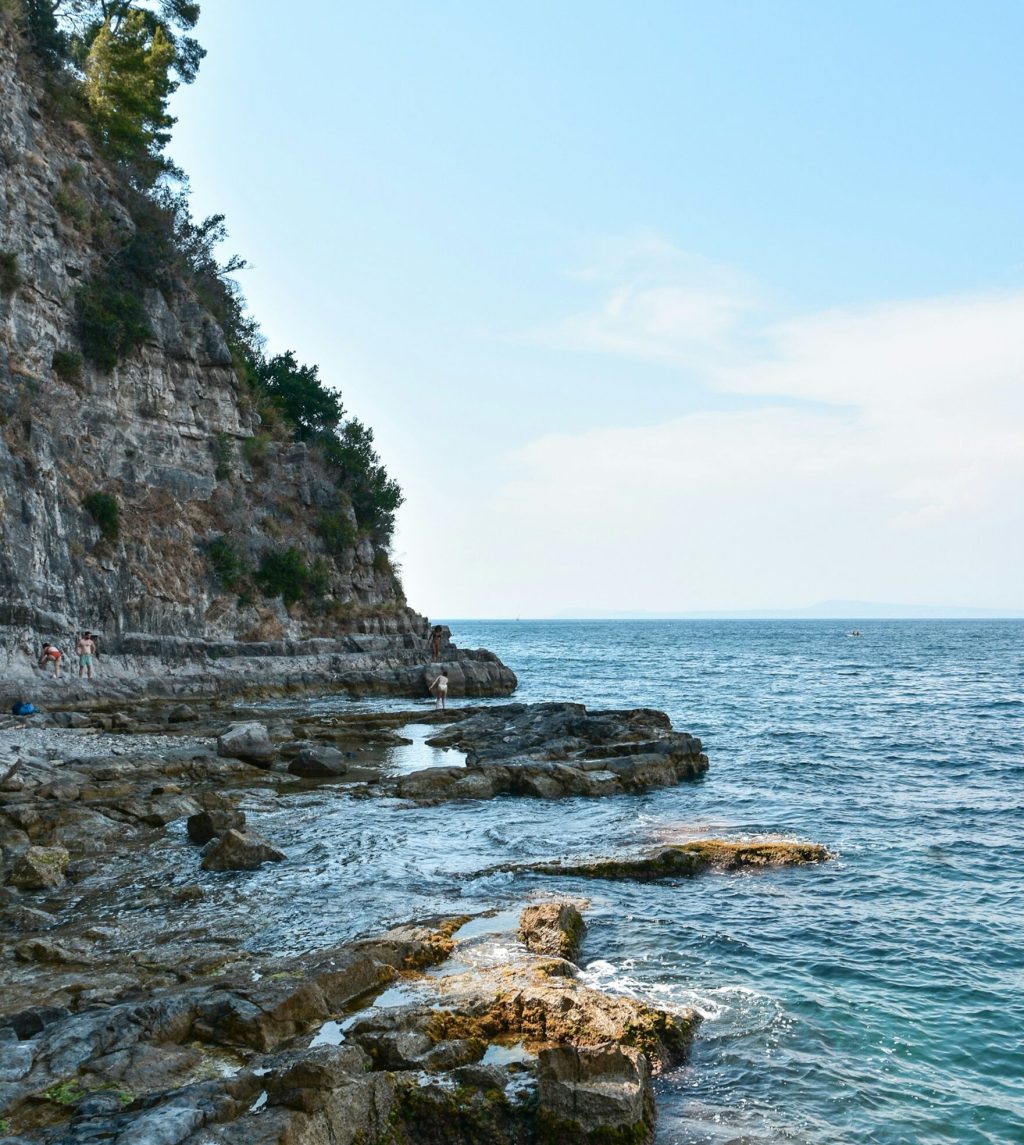

Brief History
Oh, Sorrento! This little slice of Italian paradise has been flipping the script on what a coastal town can be since way back in the day. Picture this: cliffs that dive straight into the bluest of seas, lemon groves that can make your sour face sweeter, and a history that’s as rich and layered as a lasagna made by your nonna.
Sorrento’s story kicks off before the Romans were doing their empire thing, with the Greeks calling the shots around the 8th century BC. They were the original trendsetters, laying down Sorrento’s street grid, which, let’s be honest, is still pretty handy today.
Then came the Romans, who, like everyone else, couldn’t resist Sorrento’s charm and made it their favorite holiday spot. Fast forward through a few centuries of ups and downs, including the town playing medieval keep-away with various invaders, and Sorrento emerges as the go-to place for anyone looking to soak up some Italian culture, history, and, of course, sunshine.
These days, Sorrento is the poster child for the good life on the Amalfi Coast. It’s a place where you can wander ancient streets, sip on limoncello that’ll knock your socks off, and dive into a sea as clear as your post-vacation to-do list. In Sorrento, every day feels like a throwback to a time when life was all about the simple joys – stunning views, mouth-watering eats, and history you can literally walk through.

Best Time to Visit Sorrento
The best time to visit Sorrento is during the spring (April to June) and early fall (September to October). During these months, the weather is pleasantly warm, perfect for exploring Sorrento’s beautiful sights and enjoying outdoor activities. Additionally, these periods are less crowded than the peak summer months, allowing for a more relaxed and enjoyable experience.
Tour Packages
The Positano, Amalfi, and Ravello: Small Group Tour from Sorrento offers an intimate exploration of the Amalfi Coast’s jewels. This package promises personalized attention and an immersive experience in each town’s unique beauty and cultural heritage.
Discover the enchanting Amalfi Coast with a scenic boat trip from Sorrento, offering stops in the picturesque towns of Positano and Amalfi. This full-day adventure includes hotel transfers, allowing you to relax and enjoy the journey without any hassle. Marvel at panoramic views of the coastline, take a leisurely stroll through the charming streets of Positano and Amalfi, and seize the opportunity to swim in the crystal-clear waters at two stunning locations.
Where to Stay in Sorrento
In Sorrento, top accommodations offer unique and luxurious experiences, each with its own charm:
- Grand Hotel Excelsior Vittoria: Celebrated for its historical grandeur and spectacular views of the Bay of Naples.
- Bellevue Syrene: Offers elegance and unparalleled sea views, with a history of welcoming guests since 1820.
- Hotel Plaza Sorrento: Modern amenities and a central location make it a popular choice for travelers.
- Maison La Minervetta: Stands out with its unique decor and cliffside views, offering a very personal and intimate stay.
Why Visit Sorrento
Visiting Sorrento offers a blend of stunning natural beauty, rich historical sites, and vibrant cultural experiences. From the breathtaking views of the Bay of Naples to the charming alleys filled with artisan shops, Sorrento serves as a perfect base to explore the Amalfi Coast, Capri, and Pompeii.
Its culinary delights, scenic lemon groves, and welcoming atmosphere make it a must-visit destination for those seeking the essence of Italian hospitality and beauty.
And of course, the Sorrento’s secret beach, Bagni della Regina Giovanna, offers a secluded escape with its crystal-clear waters and ancient Roman ruins. This hidden gem, encircled by natural cliffs, provides a serene spot for swimming and sunbathing, away from the bustling tourist spots.
5. Capri: An Island Reverie Where History Meets Paradise
Capri, Italy, has a rich history dating back to the Roman Empire when it was a luxurious resort for emperors and the Roman elite. The island was known for its beauty and was immortalized in Greek and Roman myths. Over centuries, it has been admired for its stunning landscapes, cultural significance, and architectural remains, including the famous Villa Jovis, the emperor Tiberius’s residence. Capri’s allure has continued into modern times, attracting artists, writers, and celebrities, making it a symbol of sophistication and natural beauty.
Best Time to Visit Capri
The best time to visit Capri is during the spring (April to June) and early fall (September to October). These months offer mild weather, perfect for exploring the island’s beauty without the peak summer crowds. This period provides an ideal balance of pleasant temperatures and a more relaxed atmosphere, making it easier to enjoy Capri’s stunning landscapes, outdoor dining, and sea excursions.
Tour Packages
Embark on a captivating boat trip from Sorrento to Capri, highlighted by an early visit to the Blue Grotto to beat the crowds. This tour offers a mix of adventure and relaxation, with swimming, snorkeling, and free time to explore Capri’s charm. Key features include a guided visit to the Blue Grotto, scenic views of Capri’s landmarks, and refreshments onboard. Additional costs include embarkation/disembarkation taxes and Blue Grotto entry. Ideal for those seeking a memorable day out in one of Italy’s most beautiful islands.
Where to Stay in Capri
In Capri, the top accommodations are renowned for their exclusivity and breathtaking views, each providing a unique slice of paradise:
- Capri Palace Jumeirah: Known for its luxurious spa and Michelin-starred dining, this hotel offers elegance and panoramic views of the Mediterranean Sea.
- JK Place Capri: This boutique hotel combines stylish interiors with exceptional service, set against the backdrop of the stunning Capri coastline.
- Hotel Quisisana: A landmark of Capri, offering world-class amenities and a prime location in the heart of Capri, perfect for exploring the island’s beauty.
- Villa Marina Capri Hotel & Spa: Features a blend of contemporary luxury and historical charm, with spectacular views and a serene spa experience.
Why Visit Capri
Visiting Capri offers an experience filled with breathtaking natural beauty, historical richness, and exclusive luxury. Known for its dramatic cliffs, crystal-clear waters, and the famous Blue Grotto, Capri is a blend of natural wonders and chic sophistication. The island’s charming piazzas, designer boutiques, and lush gardens provide a serene yet vibrant atmosphere. It’s an ideal destination for those seeking both relaxation in stunning landscapes and a taste of Italy’s famed dolce vita.
6. Pompeii: Echoes of Ancient Splendor
In the shadow of Mount Vesuvius, Pompeii beckons with its ancient streets and frozen whispers of the past. This archaeological treasure offers a unique window into Roman life, frozen in time by volcanic ash in 79 A.D. Walking through Pompeii is like stepping back in time, where every stone tells a story of ancient Roman life, culture, and tragedy.
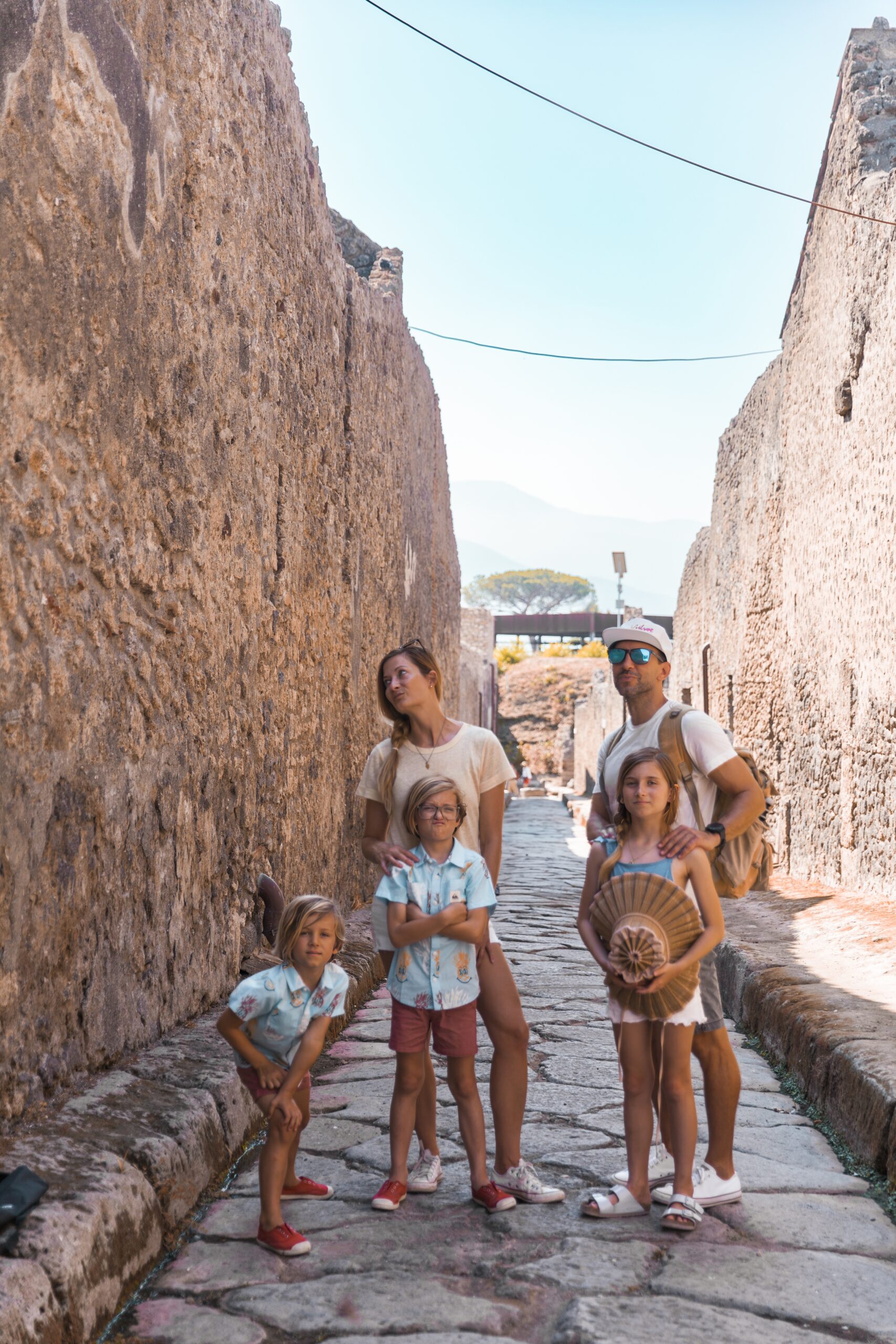

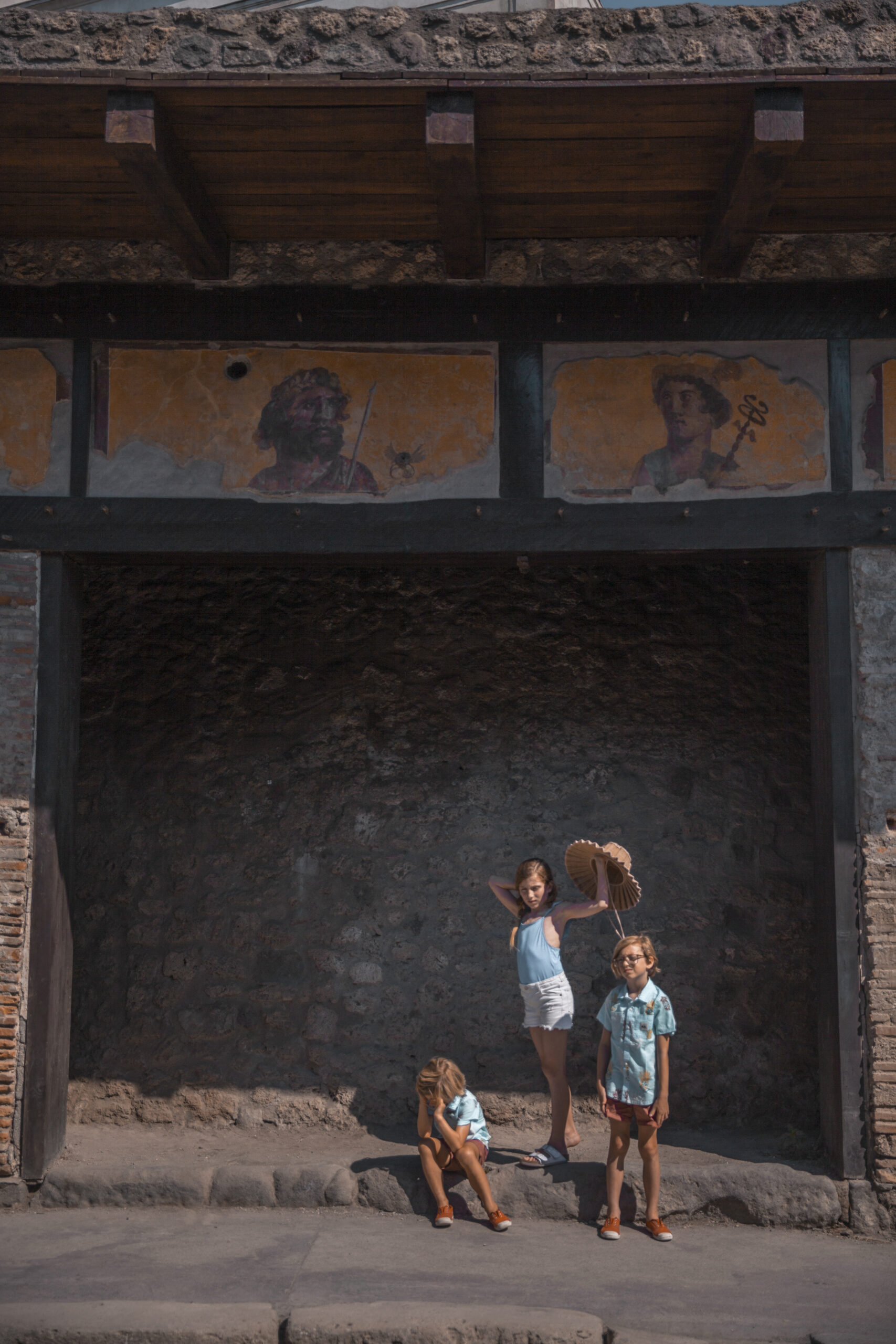
Brief History
Pompeii’s history is a compelling tale of life, catastrophe, and preservation. This ancient Roman city was thriving and vibrant, complete with bustling markets, elaborate baths, and grand homes, until AD 79 when Mount Vesuvius erupted. The volcanic ash and pumice that rained down on Pompeii acted as a double-edged sword—it was both a destroyer and a preserver.
While it obliterated the city’s life, it also encased and protected Pompeii from the ravages of time. Unlike any other archaeological site, Pompeii offers an intact vision of daily life in a Roman city, with preserved buildings, mosaics, and frescoes. This unique preservation provides an unmatched window into the past, making Pompeii a place where history is not just learned but experienced.
If you have the time, listen to this wonderful history podcast about Pompeii.
Best Time to Visit Pompeii
The best time to visit Pompeii is during the spring (April to June) or autumn (September to October) months. These seasons offer pleasant weather, fewer crowds, and a more enjoyable exploration of its vast ruins. We went in July and the kids were too hot.
Tour Packages
Discover the wonders of Pompeii with an Entry Ticket and Guided Tour led by an archaeologist. This 2-hour journey through history offers skip-the-line access and a personal exploration of Pompeii’s most famous landmarks, including the Marina Gate, the Forum, and the Lupanar, among others.
Limited to 20 participants, this tour ensures an intimate experience, diving deep into the ancient city’s stories, preserved by the tragic eruption of Mount Vesuvius in 79 AD.
The tour includes headsets for larger groups, ensuring you don’t miss any insights, and concludes with expert recommendations for further discovery. Note: Food, drinks, and transportation are not included.
Where to stay in Pompeii
To enhance your visit, consider staying nearby. Booking.com lists several popular accommodations, including:
- Hotel Pompeii Ruins offers a comfortable and convenient base for exploring the ancient city of Pompeii. Just a stone’s throw away from the archaeological site, this hotel provides guests with modern amenities amidst the historic backdrop of one of Italy’s most famous attractions.
- Villa dei Misteri, nestled close to the mystical ruins of Pompeii, offers a unique stay experience that blends history with comfort. Named after the famed ancient villa rich in frescoes, this accommodation provides a serene escape with views that sweep over the ancient city and towards Mount Vesuvius.
- Hotel Forum, located in the heart of Pompeii, presents an oasis of tranquility right at the doorstep of the ancient ruins. With its lush garden, contemporary rooms, and panoramic views of the archaeological site, this hotel combines modern luxury with the historical charm of its surroundings.
- Casa di Plinio offers a charming and intimate stay experience, capturing the essence of Pompeii’s rich history in its beautifully decorated rooms. This cozy bed and breakfast, named after the famous Roman author Pliny the Younger who documented the eruption of Vesuvius, provides a warm, welcoming atmosphere and personalized service.
why visit Pompeii
Pompeii is a poignant reminder of nature’s power and the fragility of civilization. It offers an immersive experience into the ancient world, where visitors can walk down Roman streets, enter homes and public buildings, and see firsthand the art and architecture that have influenced Western civilization for centuries. A visit to Pompeii is a journey through time, a chance to connect with history in an intimate, unforgettable way.
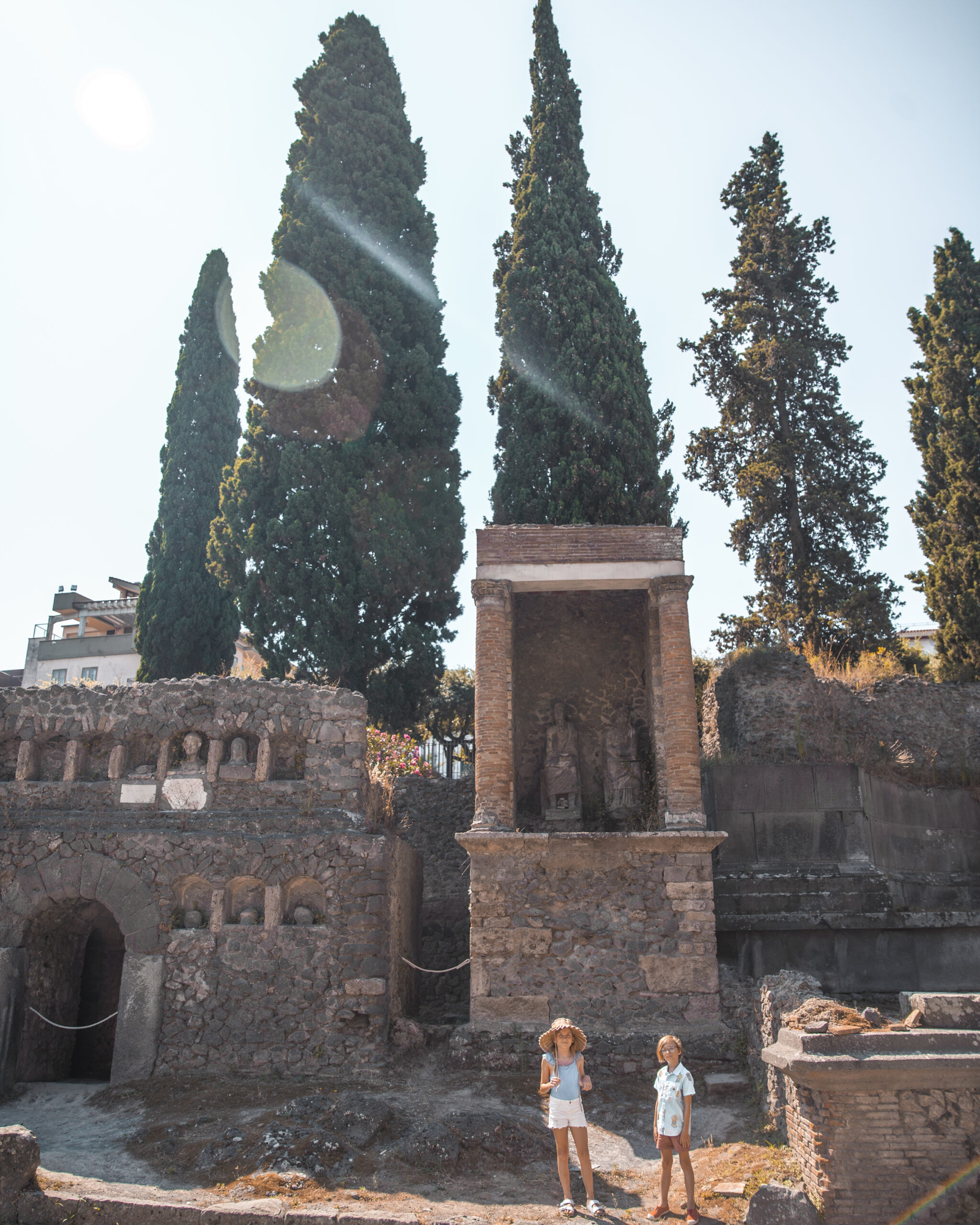
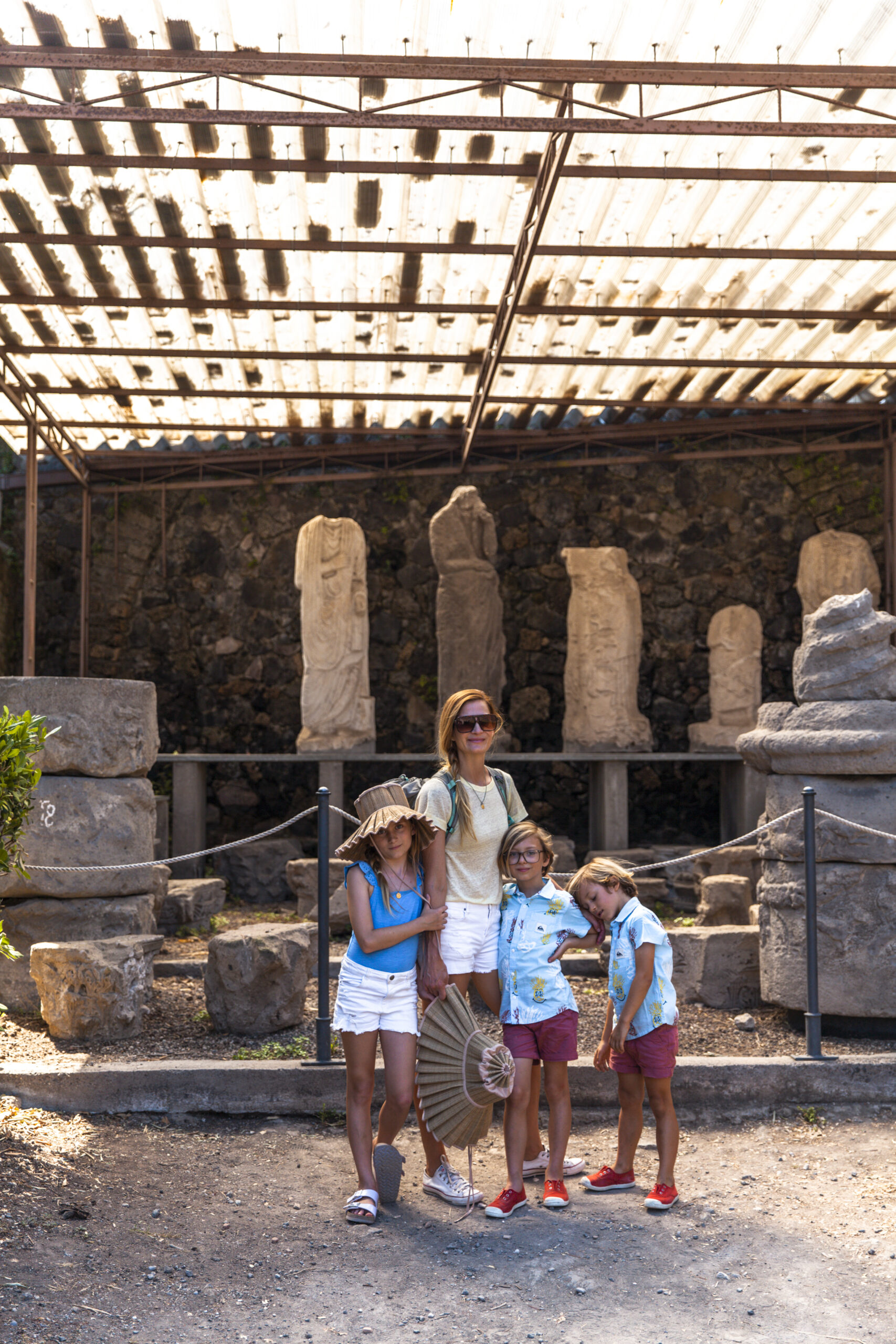
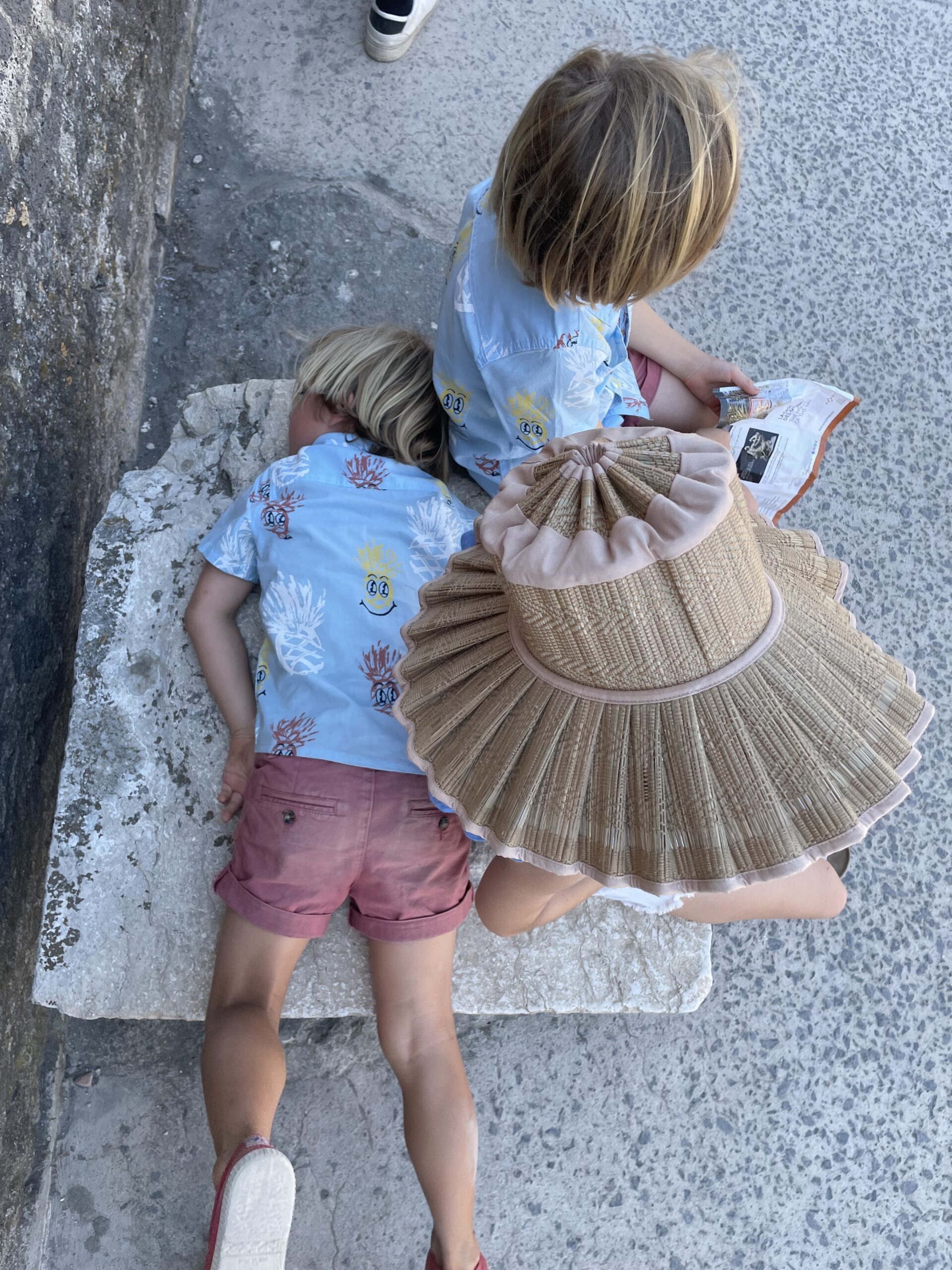
Frequently Asked Questions (FAQs)
Want to deepen your understanding of the Amalfi Coast and surrounds’ most beautiful places? Here are some questions that often come up regarding the best sites to visit in this region.
When is the best season to visit Sorrento and the Amalfi Coast?
The best season to visit Sorrento and the Amalfi Coast is April to June and September to October as these places offers mild weather and fewer crowds.
Can I visit the Blue Grotto in Capri year-round?
The Blue Grotto can be visited year-round, weather permitting, but the best conditions are typically from spring to early fall.
What are the must-see historical sites in Ravello?
Villa Rufolo and Villa Cimbrone are not to be missed, known for their stunning gardens and historical architecture.
What local dishes should I try while visiting these locations?
Sample seafood dishes, limoncello, Neapolitan pizza, and pasta with fresh local ingredients for authentic Southern Italian cuisine.
Final Thoughts on Visiting Beautiful Places in the Amalfi Coast area.
Exploring the Amalfi Coast and beyond, from the enchanting streets of Sorrento to the serene beauty of Ravello, offers a journey through breathtaking landscapes, rich history, and vibrant culture. Whether you’re drawn to Capri’s azure waters, Amalfi’s dramatic coastlines, or Positano’s picturesque charm, each destination promises unforgettable experiences. Along the way, savor the flavors of local cuisine, immerse yourself in historical wonders, and embrace the laid-back Mediterranean lifestyle. This article serves as your guide to the most beautiful places in Southern Italy, inviting you to discover the magic that makes this region a true gem.

